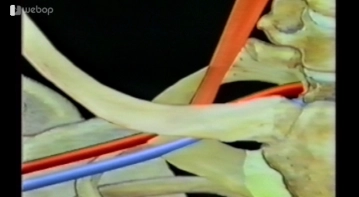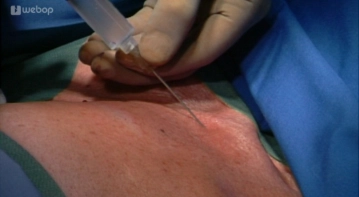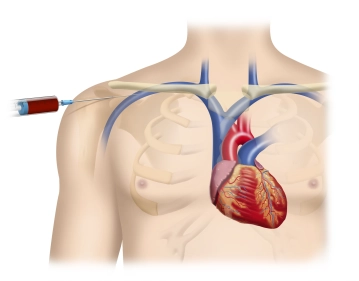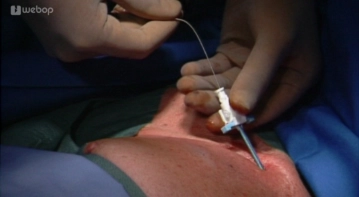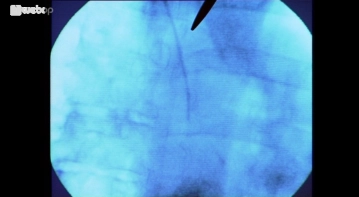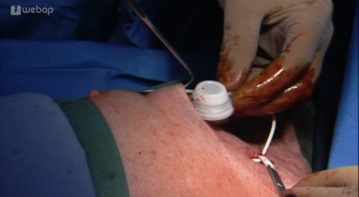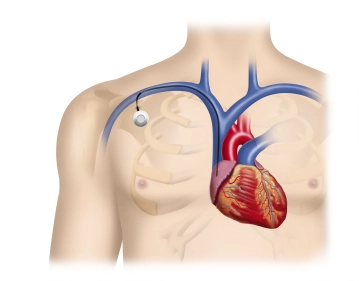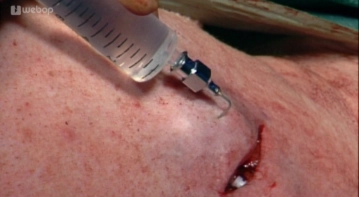Demonstrating the anatomical relationship of the scalene muscle, subclavian/brachial artery and vein, and the relation of the clavicle regarding these two vessels.
-
Topography of the subclavian vein
-
Infiltrating the surgical site with local anesthetic
-
Puncturing the subclavian vein
Puncture the vein with the needle initially at 70°-90° to the clavicle; after feeling no more resistance and with the needle definitely inferior to the clavicle, change the direction and advance the needle toward the (marked) suprasternal notch. Verify correct intraluminal placement by drawing venous blood into syringe.
-
Seldinger technique
Once intravenous access has been gained, insert the guidewire through the needle. Make a stab incision with a scalpel (no. 11) and then insert the dilator with the introducer.
Remove the guidewire and cover the introducer with a fingertip to prevent any air embolism (here not always illustrated adequately).
Remove the dilator while keeping the introducer in place.
-
Inserting the port tubing
-
Preparing the port pouch
-
Subcutaneous tunneling
Now create subcutaneous tunnel with appropriate dilating forceps and pull tubing through.
Verify tubing location by fluoroscopy and shorten tubing to correct length.
Attach tubing to port outlet using the mosquito clamp (with its branches sheathed in plastic tubing).
The distal end of the tubing must be slipped completely over the nipple and secured there by the cuff clicking into place.
-
Final functional verification

